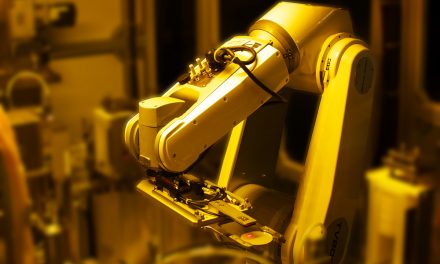Simplicity is the ultimate sophistication

Leonardo Da Vinci never wrote code. But his statement, made over 500 years ago, serves as a guiding philosophy for Mycronic Software Engineer Nicolas Guillot and the international team. Together they are designing breakthrough software for tomorrow’s zero-defects smart assembly plants.
“Writing code is like crafting an inspiring poem – it should be simple and beautiful.” says Nicolas. “I’m not a poet, but when I see my code coming to life elegantly at a customer manufacturing site and really making a difference, it gives me a great sense of satisfaction.”
Joining an international group
Based outside Grenoble, near the French Alps, Nicolas, age 43, is a 16-year software veteran who joined Vi Technologies in 2006 as a consultant and was employed by the company in 2010. The company was acquired by Mycronic in 2017. Over the years, he’s had the opportunity to travel quite a lot, meeting customers and colleagues in Europe, the US, China and elsewhere.
Diverse, smart and inclusive
Flexible work schedule
On a given day, Nicolas can be found in Teams meetings with product and software developers from the head office in Sweden, coders from the Czech Republic or U.S. colleagues. Or he might be sketching up the shape and geometry of components on white boards with colleagues at the Grenoble office. His schedule is busy but flexible and he’s usually in the office at least three days a week or more.
But when it comes to focused programming tasks, he says, these can best be done in concentration at home where disruptions are minimal. To break things off and offer a bit of work-life balance, there’s often a lunch mountain biking outing, short hike in the Alps or various after-work activities. “We’re really like a family here and the spirit is great,” he says.
Finding a career path
Nicolas’ career path is not uncommon. At an early age, he grew interested in a logical-mathematical “way of thinking” and viewed programming with the eye of a philosopher: “Clear programming is good thinking,” he says.
After graduating from top-rated Grenoble INP, he worked at different technical consultancies, including Capgemini, before doing work for VI Technology, and later getting hired full time. His focus was on developing software for state-of-the-art Solder Paste Inspection (SPI) and Automated Optimal Inspection solutions (AOI) – something he’s very proud of. “Some of the early interfaces we did are still super modern looking today,” he says.
“A candy store for engineers”
For Nicolas, the main attraction and differentiator for Mycronic is the technology itself. By this, he doesn’t just mean the software. “I’m talking about everything. Our machines are like advanced robots, involving everything from mechanical engineering to electronics, optics, software, component expertise, and AI. This is a candy store for engineers and sets us apart. To develop the software, you need to understand the hardware – they go hand in hand. Here he notes that Mycronic has worked very hard to upgrade its computer programming languages from a “monolithic” approach to accommodate a more distributed architecture.
Like watching 1,000 Netflix films at once
As an example of cutting-edge technology, he mentions Mycronic’s latest SPI system, which requires massive computing capacity and is equipped with a user interface that’s as easy to use as a smartphone. “Just imagine. . . we’re talking about a machine capable of processing 50,000 images per second at 20-micron resolution. That’s the equivalent of watching 1,000 4K Netflix films at the same time. The flow of data being taken up by the 3D sensors requires very smart and efficient software due to the complexity.”
Solving problems that matter
For Nicolas, the best software development starts “upstream” in the technical design and is always rooted in a business context: Why do we do this? – solving a customer challenge or need. Like boosting throughput times to reduce costs in a recession. Or eliminating defects on boards for self-driving vehicles.
Bringing electronics to life
That need leads him to Mycronic’s mission of “bringing electronics to life”, which really came home on a trip to Mexico to solve a production challenge. He and a colleague worked the weekend and night shifts to solve a traceability software glitch that allowed an automotive company to handle the recall of thousands of vehicles. “Not only was the customer super happy, but we safeguarded people’s lives. Whether it’s a car, pacemaker, satellite, or another device, what we do can make a difference.”
When you can frame and solve a programming problem simply, it’s magical!
For Nicolas, building on a well thought-through technical foundation and roadmap is essential. “When you can frame and solve a problem simply, it’s magical!” he concludes.












